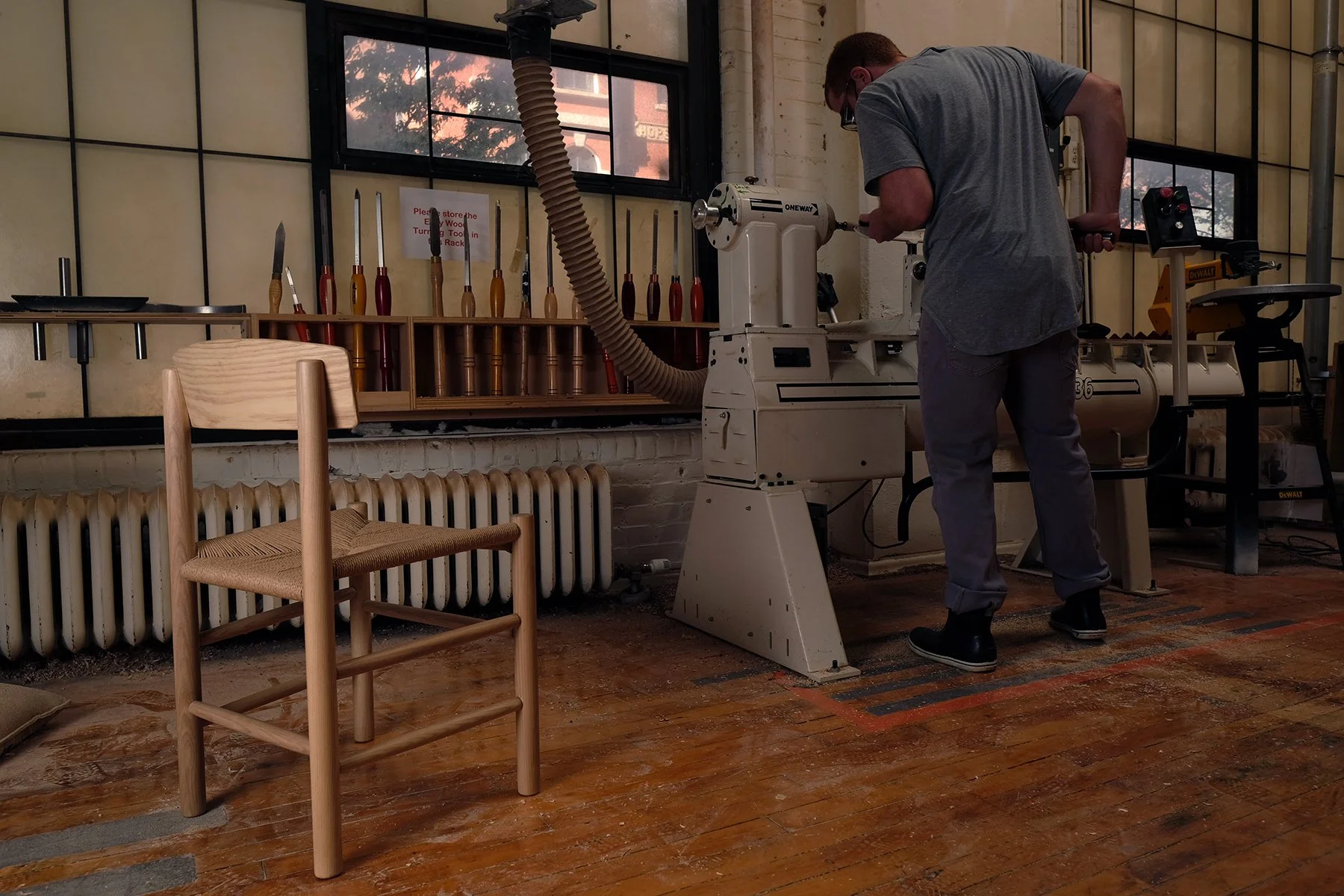Whence It Came_ Analog / Digital / Analog
A J39 chair in Hallgrimskirkja in Reikjevik, Iceland
The only time I’ve ever seen a J39 was in Iceland in 2017.
Claire, Mara, and I had an afternoon to kill in Reykjavik, as we waited for our mini camper to be returned, cleaned, and readied for our week-long trip. A quick survey of the little city pointed us in the direction of Hallgrímskirkja, the city’s famous modern cathedral at the top of a hill.
We stopped to look up at the iconic structure, designed to resemble much of the Icelandic landscape we were eager to see in the coming days, and then entered through a series of doors.
Head on a swivel, taking in the vastness of the nave, I stopped just shy of a full 180, and rushed back, just to the right of the doors through which we just walked. There it was, in the flesh. A single J39 chair. A chair I had grown so fond of, I had actually followed the hashtag, #J39 on Instagram. I had never seen one in person, though was well aware of its wide use in Denmark. But here? A single, modest chair, placed in this iconic Icelandic church which was anything but modest.
As the organ player belted out a slew of long chords, I snapped pictures of the chair, picked it up, turned it over, admired it. The patina and color it had taken on caught me by surprise but it’s reference to the Shaker furniture I had seen countless times before was clear and apparent. My travel partners circled back and asked if I was ready to go. I hadn’t really seen much of the cathedral, but was more than pleased with the visit.
The J39 was designed by Mogensen in 1947 for FDB, however it is currently produced by Fredericia. Inspired by Kaare Klint’s Church chair, which drew heavily from Shaker furniture from 18th and 19th century America. Intended for standardization and production, it became one of the best selling wooden chairs in Denmark, earning its nickname The Peoples’ Chair. Originally produced in Beech with woven seagrass, it is now most widely produced in Oak with paper cord.
It’s beauty, clever design, and function made it the perfect chair to use as a model for Whence it Came.
Analog / Digital / Analog is as close to copy as I could manage using the CAD I had access to. The file referenced was found on Fredericia’s website, and I assume is intended to be used by interior designers for specifying the chair in interiors projects.
While the originals are Beech or Oak, the availability of 8/4 Ash in Rhode Island, which I had not had access to Ohio for years, made it impossible to pass up.
Even on a one off scale, Analog / Digital / Analog demonstrated its clever design through its speed, relatively inexpensive material and limited required knowledge. (This last bit could be a thesis unto its own. Is it good? Is it bad?) The capital investment would be high, but the processes needed would and did scale easily. (Note the original chair was designed for industry, and its design taking into account scale of production was no accident.)
Analog / Digital / Analog, seen in the place I purchased the materials for its make. The RISD 3D store had an abundance of 8/4 Ash. The first time I saw it there I purchased 10 board feet with no project in mind for it yet.
Analog / Digital / Analog, seated in front of the lathe which I used to make most of its components. This chair, designed for production can be made almost entirely using one machine.
It is made from turned, kiln-dried ash components, a laminated ash backrest, screws, PVA glue, and Danish paper cord.




